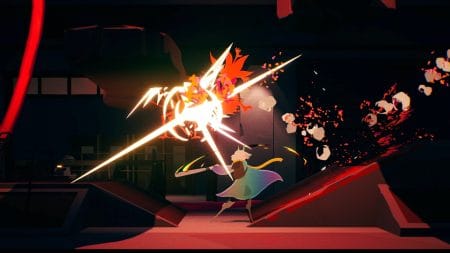There’s nothing quite like a good tabletop RPG. With the right mix of elements (a well-designed game board, a creative set of rules, an adventurous group of folks to play with), it’s easy to pile up the hours. And with the rise of mobile gaming, plus handheld juggernauts like the Nintendo Switch and Steam Deck, many of these experiences are available to play solo, on the go.
The Horror at Highrook, developed by Nullpointer Games and published by Outersloth, takes the look and feel of a TTRPG and makes it accessible to a wider audience. Like Dungeons & Dragons, you have a party with unique backstories and proficiencies. Like Baldur’s Gate 3, the action plays out from a single-player perspective. Yet, unlike either of those experiences, The Horror at Highrook is so streamlined and user-friendly that it plays more like a game of Clue.
That may be a turnoff for some, but for those seeking a unique entry point into TTRPGs, The Horror at Highrook is a satisfying starting course. It has issues that derail the fun, ranging from poor inventory management and lackluster leveling mechanics to the lack of any real hint system. It’s also a fairly linear affair, with little replayability (something at odds with its tabletop roots). Still, if you can embrace the flaws, there’s a fun little adventure waiting for you.
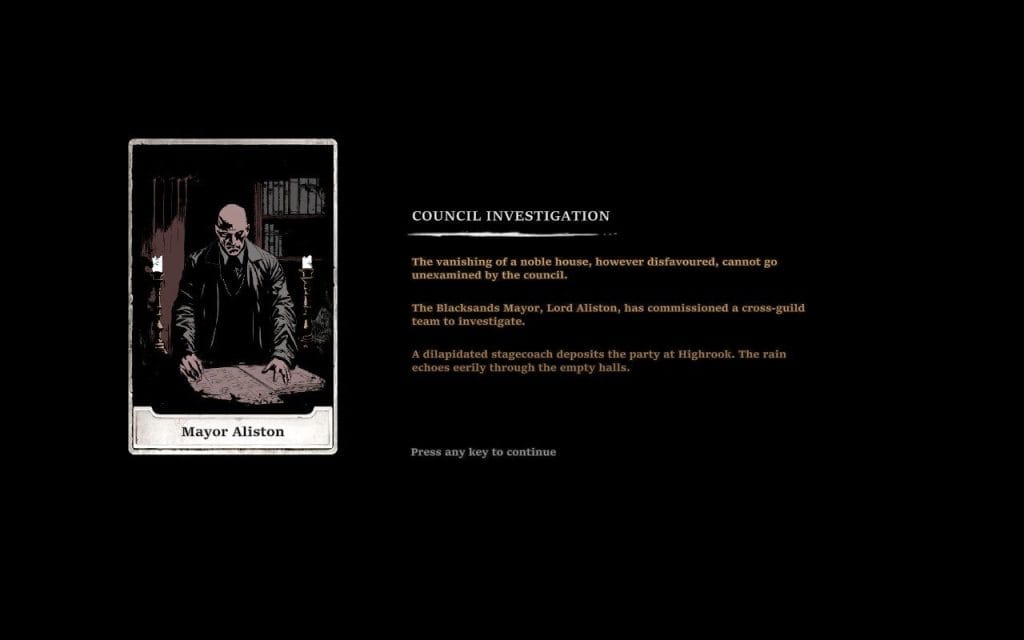
Break Out the Ouija Board!
The Horror at Highrook takes place at the titular Highrook Manor, a mansion that was home to the prestigious Ackeron family before tragedy struck. After murmurs spread of the family’s disappearance, the city’s High Council hires four specialists to investigate.
As this makeshift investigative team gains its bearings, so does the player. Introductions abound: There’s Atticus Hawk, a bruiser and outspoken opponent of the upper class; Doctor Caligan, a physician searching for a cure to a deadly plague; Mecanist Astor, a gifted technician and inventor; and Scholar Vitali, a historian with deep knowledge of the occult. Each specialist brings unique skills to the table, as well as differing opinions on the mysterious Ackeron disappearance. As you explore the manor, you’ll watch these personalities debate strategies and react to new revelations.

It’s a strong cast. While the stakes are never particularly high (I would have loved more conflict, or even the prospect of treachery within the team), I enjoyed my time with these characters. Their designs are striking, and their dialogue is sharply written, with descriptive prose befitting the most charismatic of Dungeon Masters.
As with any DnD-inspired campaign, however, it’s important to know what you’re getting into. This is a dense reading experience, with scores of dialogue exchanges and well over a hundred additional notes and letters. These supplemental resources offer tons of additional insights into the world and characters of Highrook, but can be quite daunting. (Even the developer cautions on Steam that “there is a lot of text.”) I found myself skipping many of these letters—not because they were poorly written, but merely because I wanted to continue trekking ahead within the actual manor.
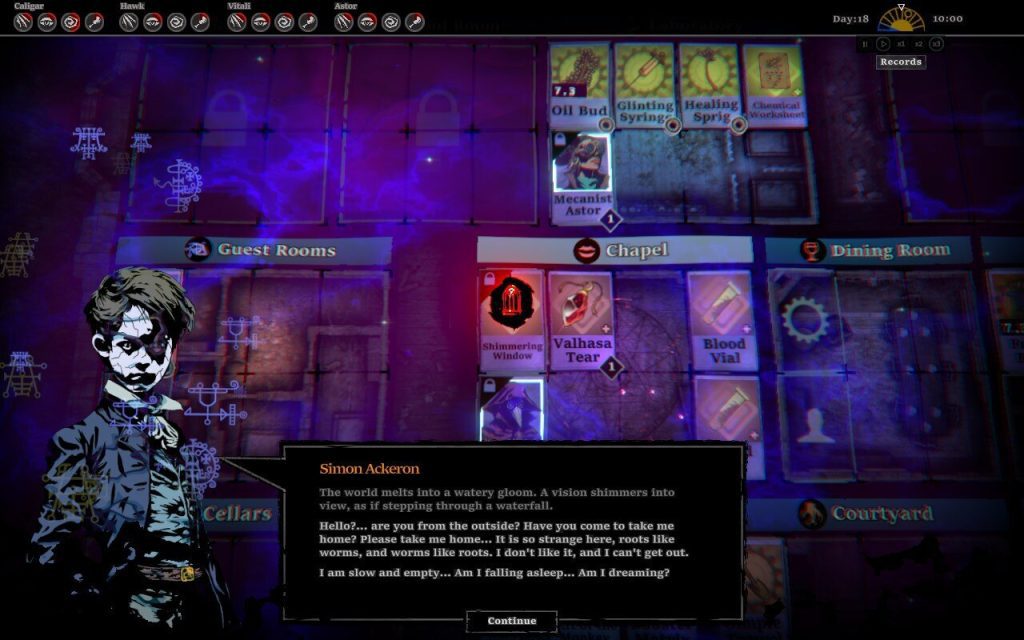
“Hawk, with the Spyglass, at the Cliffs”
As mentioned before, the core gameplay loop of The Horror at Highrook feels much like a round of Clue. Like Hasbro’s classic, you’ll navigate various rooms of the manor, with each room containing unique objects. Unlike Clue, however, you’re not guessing those objects, nor are you trying to solve a murder.
Instead, you’re pairing different characters and objects to generate various “cards.” For example, you can move Hawk or Astor (both proficient in the “Paths” skill) to the Cliff Top, then use the Spyglass card to generate a Meat card. You can then take the Meat card to the Kitchen and have either character cook a meal to serve to the entire group in the Dining Room, quelling each person’s hunger.
That last bit is vital, as each character has four meters that you must manage: vitality, fatigue, hunger, and madness. Thankfully, character-object-location pairings are consistent; the Spyglass will always net you a Meat card if you don’t already have one. After a half-hour or so of playing, you’ll learn the different play lines that grant access to key cards, with permutations becoming more complex as you discover new rooms of the manor.
The gameplay loop is simple, but also strangely addictive. Much like how you manage cards in a deckbuilder, in Highrook you’ll be generating resources, discovering combos, and using newfound knowledge to make progress in your battle against the occult. Add in the survival mechanics, and there’s an ever-present sense of dread as you work to complete tasks as quickly as possible. (In a nice quality-of-life touch, you can speed up or pause the action at any time, ensuring things never get too easy or too stressful.)
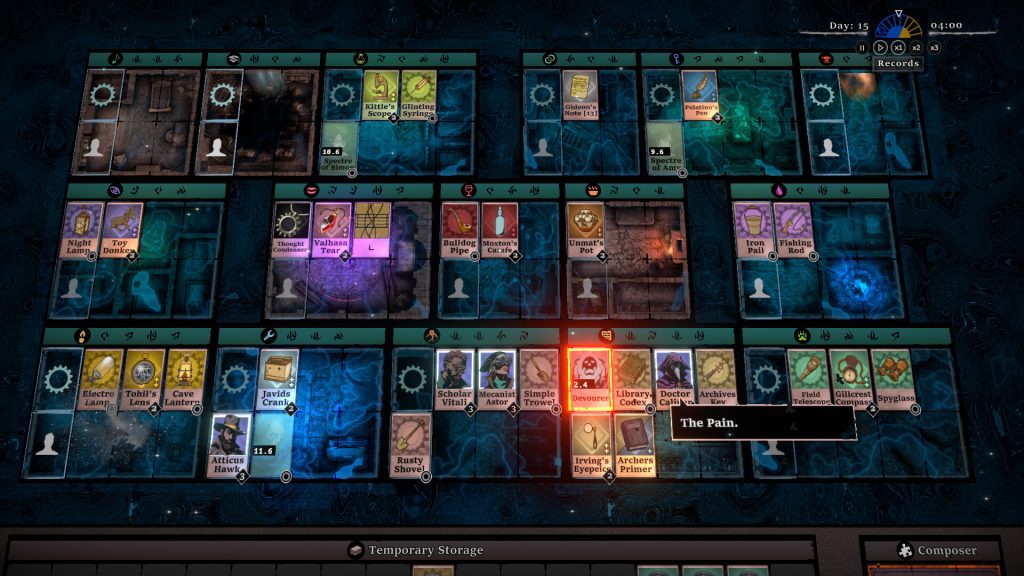
Sweet Bliss; Occasional Nightmares
Read letters, create cards, progress the story. That’s about the entirety of the Horror at Highrook experience. If that doesn’t sound like your jam, then it probably won’t be. That said, if you’re an avid reader or DnD fan and place a premium on atmospheric storytelling, Highrook offers what you’re looking for in spades.
The campaign took me about six hours to complete across eight chapters (roughly 45 minutes per chapter)—just the right amount of time for the game to tell its tale without overstaying its welcome. However, the experience wasn’t without its warts.
My chief complaint with Highrook pertains to its hint system—or, more accurately, the lack thereof. While I completed most of the game with little hassle, there were a few late-game moments when I had to perform a very specific action with a very specific array of cards. In earlier chapters of the game, the play lines were short enough for me to recall by memory. This late in the game, however, I had access to every room in the manor and several dozen cards, each with unique effects. Trying (and failing) to reproduce one exact card I needed left a sour taste in my mouth.
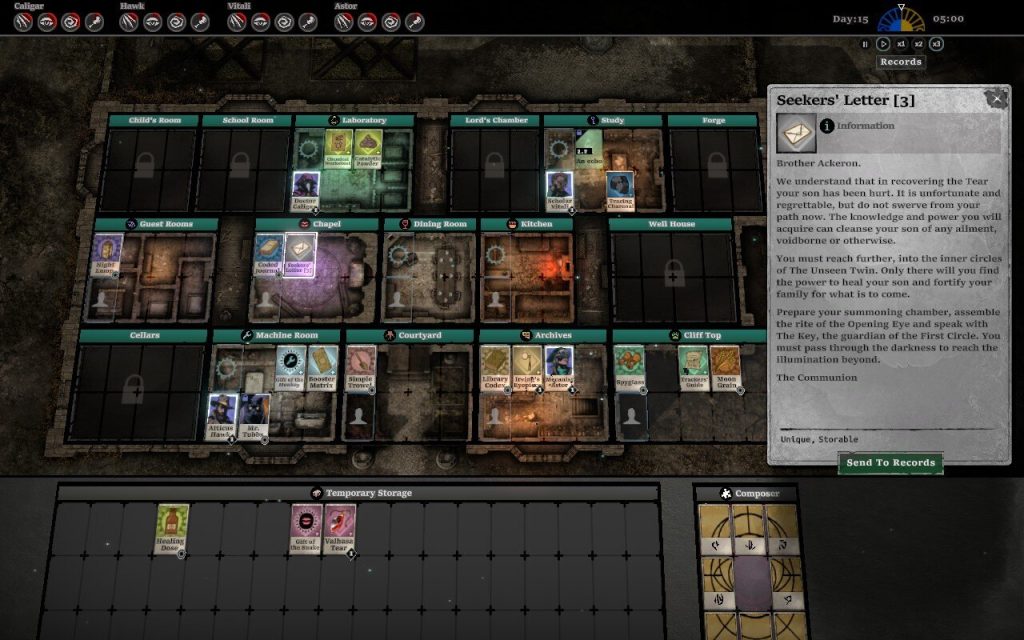
I would have loved more comprehensive information tracking. Even a simple “recipe book” detailing which inputs lead to which outputs (like you find in so many other RPGs) would have done much to alleviate my issues. Instead, I had to rely on trial and error to proceed. It doesn’t help that the in-game leveling system is extremely rigid, with little flexibility in how or when to improve your characters’ skills.
Exacerbating these issues is The Horror at Highrook’s inventory system. While perfectly functional (you can drag any cards you’re not currently using into a separate box to stay organized), the mechanic felt underutilized. I would have loved the ability to sort by room, name, or function.
While far from deal-breaking, these small inconveniences added up over time, putting a damper on the overall experience.
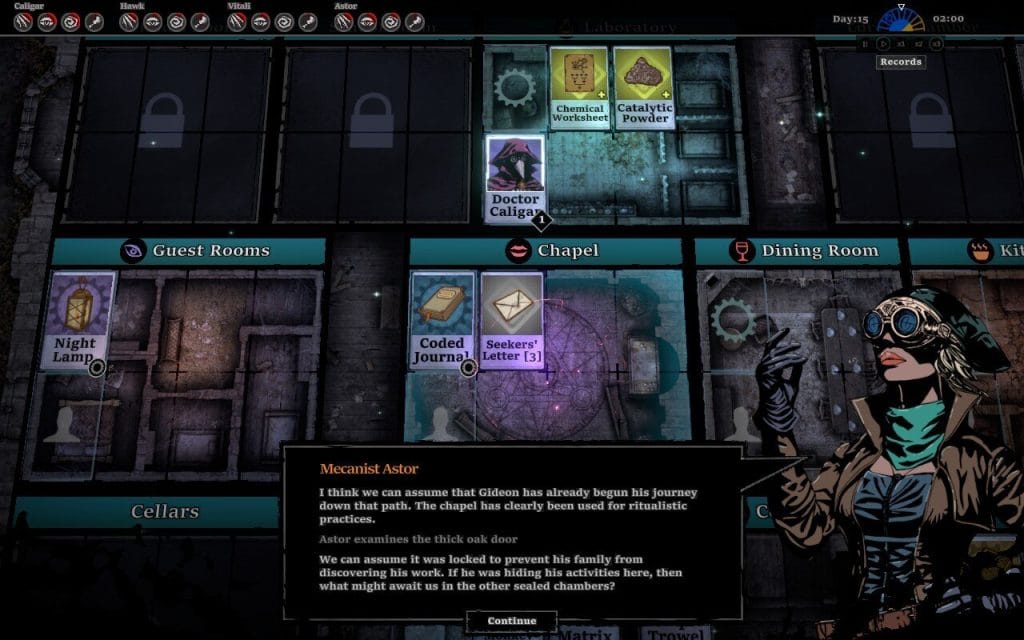
Final Thoughts
The Horror at Highrook is a stylish, atmospheric game that’s greater than the sum of its parts. Its gameplay loop is mesmerizing (if simple), its narrative is engaging (even if there aren’t many twists), and the action is accessible to players of all backgrounds.
Some quality-of-life issues and late-game frustrations hold the experience back. I’d also be remiss if I didn’t mention the lack of any real replayability. The game has a few side quests and multiple (slightly different) endings, but because the campaign is so linear, you likely won’t want to bother with a replay, even if you missed some content the first time.
Still, it’s hard not to like The Horror at Highrook. Developer Nullpointer put a lot of effort into the vibes—from the soothing soundtrack, to the striking characters, to the supernatural phenomena they encounter—and the charms abound. The game may not be the Next Big RPG, but perhaps that’s a good thing.
Score: 7.8/10
The Horror at Highrook, developed by Nullpointer Games and published by Outersloth, is available now on PC via Steam. MSRP: $19.99. Version reviewed: PC (via Steam Deck).
David is the founder of The Punished Backlog. He has a problem finishing games he starts.
Just beat: Donkey Kong Bananza.
Working on: Hollow Knight: Silksong.
Can't wait for: Metroid Prime 4: Beyond.
Follow David on Twitter at @David_Silbert to keep up to date with all things The Punished Backlog.








